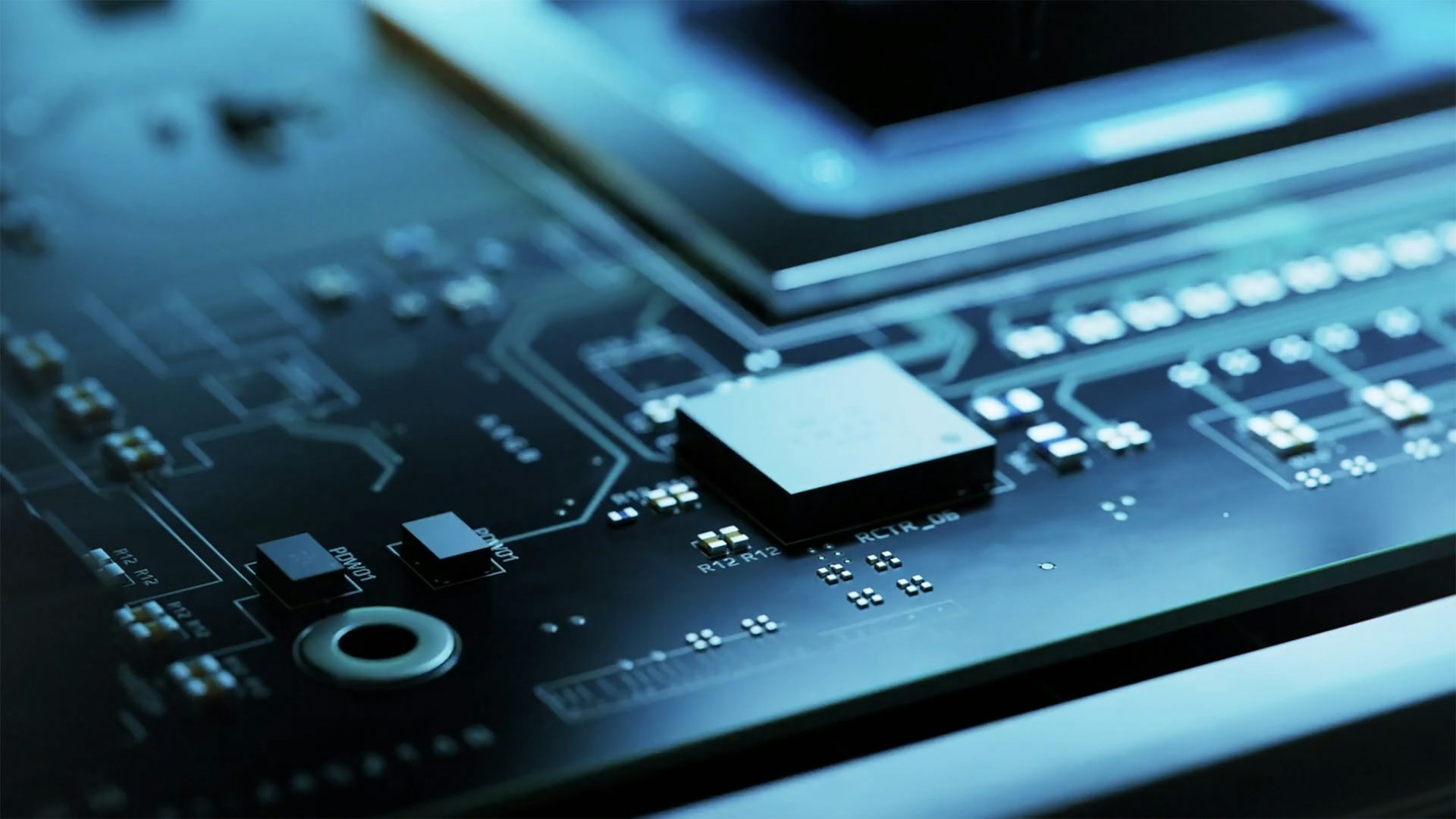半導体のライフサイクルマネジメントとは?
ライフサイクル管理は、今日のダイナミックな半導体エコシステムにおいて極めて重要です。急速な進化と、製品不足やサプライチェーンの不確実性などの複雑な課題により、チップメーカーはライフサイクルのあらゆる段階で効果的な管理を行うためのエンドツーエンドのソリューションを必要としています。これらの複雑さをうまく乗り切るには、統一されたアプローチが必要です。
半導体のライフサイクルプロセスとデータを合理化
効率的なプロセスと合理化されたデータ管理により、半導体ライフサイクルのワークフローを最適化します。半導体開発における生産性とイノベーションを強化します。
市場収益の成長
チップ需要の高まり、新興技術、製品の複雑化により、世界の半導体エコシステムは2030年までに1兆ドル規模の産業になる態勢を整えています。(マッキンゼー・アンド・カンパニー)
6+システムを使用している企業
半導体企業は、効率性とイノベーションを促進する、統合された安全なコラボレーションソリューションを必要としています。共有データプラットフォームは、プロセスを合理化し、市場投入までの時間を短縮します。(Tech-Clarity)
半導体IPの企業秘密
シームレスで堅牢なセキュリティソリューションで半導体IPを保護し、イノベーションを保護し、競争の激しい環境を自信を持ってナビゲートできるようにします。(CSISの)
各段階で半導体のライフサイクルデータを取得
設計コンセプトから製造まで、ライフサイクルプロセス全体を通じて半導体データを取得し、管理します。
3つのソリューショントラックをご覧ください。これらは、チーム間のトレーサビリティ、可視性、コラボレーションを向上させるように調整されています。
シリコンからシステムまでの 安全なエンドツーエンドのトレーサビリティ とデジタル化により、今日のチップエコシステムの要求を満たします。
半導体のビジネスプロセスをリアルタイムで可視化します。
半導体のライフサイクルを形作る4つの主要なトレンドと、半導体のエンドツーエンドのライフサイクル管理が重要である理由をご覧ください。
設計段階でのエラーの早期検出を可能にし、プログラムの実行、品質保証、意思決定を合理化して、 ビジネスパフォーマンスを加速します。
人材とセキュリティをつなぎ、急速に変化する今日の状況においてイノベーションと競争を成功に導きます。
半導体の品質とNPIプロセスの改善
コストを削減し、市場投入までの時間を短縮すると同時に、半導体設計および製造プロセス全体のコラボレーションを強化し、リスクを軽減します。
PCB再スピンあたりの平均コスト
NPIプロセスを通じて組み立てる前に、設計がすべての機能と性能の目標を満たしていることを確認することで、再スピンを大幅に削減または排除します。(シーメンス)
顧客の期待の高まり
製品の品質と新製品の導入時間に対する要求は、過去数年間で指数関数的に増加しています。チップメーカーが前進し、設計のやり直しを減らし、品質を向上させる方法をご覧ください。(Tech-Clarity)
シーメンスのリソース・ライブラリを活用
包括的でリアルタイムのデータと分析により、より迅速で信頼できる意思決定のための自信を得ることができます。ビジネスを推進する重要なプロセスを明確に可視化し、安全なエンドツーエンドのトレーサビリティを求める顧客の要求に応えます。不安定な半導体エコシステムで競争するために不可欠なオープンなコネクテッドシステムへの組織の進化を加速します。

半導体ライフサイクル管理のためのスマートソリューション
製品ライフサイクル管理
インダストリアルIoTライフサイクル分析
アプリケーション開発プラットフォーム
製造実行管理
IC製造計画
プログラム管理
よくある質問 (FAQ)
半導体メーカーは、製品ライフサイクル管理(PLM)ソリューションからどのようなメリットを得ることができるのでしょうか?
当社の製品ライフサイクル管理ソフトウェア、特に半導体向けTeamcenterライフサイクル管理は、半導体業界にいくつかのメリットをもたらします。プロセスを合理化し、冗長性を排除することで、研究開発の歩留まりと新製品導入(NPI)の投資収益率を向上させます。さらに、業界のベストプラクティスに触発されたすぐに使えるワークフローにより、市場投入までの時間と 総所有コスト を削減します。また、設計と製造、プロセスフローをつなぎ、デザインハウスとファウンドリ/サブコン間のエンゲージメントを促進することで、グローバルなコラボレーションを改善します。最後に、企業全体の知的財産(IP)データ管理およびガバナンスモデルと変更管理システムの品質とコンプライアンスを保証します。
製品ライフサイクル管理ソリューションは、半導体プロセスをどのように最適化するのでしょうか?
シーメンスの製品ライフサイクル管理ソリューションは、運用の合理化、冗長性の低減、設計と製造のコラボレーションの強化により、半導体プロセスを最適化します。シーメンスのソリューションは、高度なIPデータ管理とガバナンスを通じて、研究開発の歩留まりを向上させ、市場投入までの時間を短縮し、品質とコンプライアンスを確保します。
PLMソフトウェアは半導体生産を合理化できますか?
シーメンスのPLMソフトウェアは、重要なプロセスをエンド ツーエンドで 安全に可視化し、リアルタイムで可視化することで、半導体生産を効率化します。これにより、効率的なプログラムの実行、品質保証、意思決定の迅速化が保証され、最終的に生産性が向上し、半導体製品の市場投入までの時間が短縮されます。
PLMツールは半導体サプライチェーンをどのように強化するのでしょうか?
シーメンスのPLMツールは、ソフトウェアとデータ管理システムを統合し、自動化と分析を活用して品質とトレーサビリティを向上させることで、 半導体サプライチェーンを強化し ます。合理化されたプロセス、グローバルなコラボレーション、包括的な品質管理のための統合プラットフォームを提供し、効率的な製品開発と提供を保証します。
PLMソフトウェアは半導体データの分析に役立ちますか?
はい、当社のソフトウェアは、ソフトウェアとデータ管理システムを包括的に調整することにより、半導体データ分析を支援します。エンタープライズ・リソース・プランニング、顧客関係管理、製造実行システムなどのエンタープライズ・システムと統合し、高度な自動化、機械学習、予測分析を活用します。この統合プラットフォーム により、品質、コンプライアンス、トレーサビリティが最適化され、コストと市場投入までの時間が短縮されます。プロセスの合理化、コラボレーションの強化、効率的な品質管理により、当社のソリューションは徹底した半導体ライフサイクル分析をサポートします。
半導体ライフサイクル管理ソリューションは検証をスピードアップできるか?
シーメンスのソリューションは、プロセスの合理化、コラボレーションの強化、効率的な品質管理により、半導体検証を迅速化します。ソフトウェアとデータ管理システムを統合し、自動化と分析を活用し、重要なプロセスをリアルタイムで可視化することで、当社のソリューションは検証ワークフローを最適化します。包括的なトレーサビリティとエンドツーエンドのライフサイクル管理機能により、問題の迅速な特定と解決、半導体検証の迅速化、市場投入までの時間の短縮を実現します。
詳細情報
見る
オンデマンドウェビナー |クローズドループアプローチで優れた半導体品質を実現
